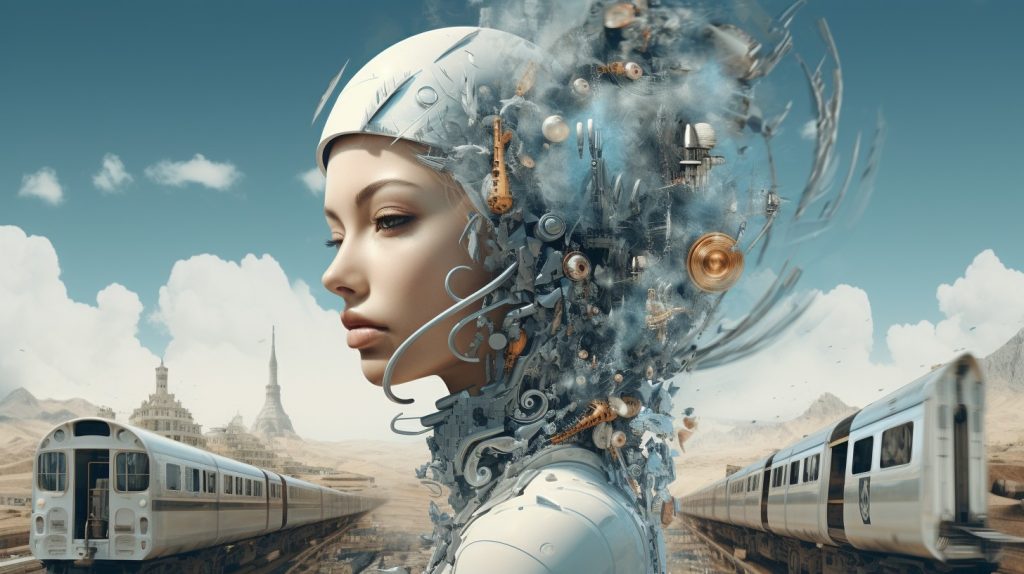In the annals of human thought, the quest to understand the universe has taken us on an extraordinary journey, leading us to ponder the grandest of questions. What if we were to rethink our perception of the cosmos? What if, instead of viewing it as a vast and empty expanse dotted with celestial bodies, we considered the possibility that the universe itself is a living entity, and that planets, stars, and galaxies are akin to atoms and molecules, forming the building blocks of its internal and external physical body?
This intriguing notion, often referred to as the “Cosmic Organism” hypothesis, challenges our conventional understanding of the cosmos and invites us to contemplate the universe as a unified, interconnected whole, much like a living being.
A Shift in Perspective
For centuries, humanity has gazed upon the night sky with a sense of wonder and awe. We’ve marveled at the intricate dance of celestial bodies, from the graceful orbits of planets to the fiery birth and death of stars. Traditionally, we’ve thought of the universe as an enormous, seemingly lifeless expanse governed solely by the laws of physics. However, recent advances in our understanding of complex systems and the interconnectedness of all things have led some thinkers to propose a more holistic perspective.
Imagine, for a moment, that the universe is not merely a collection of individual celestial bodies, but rather a vast, interconnected web of energy and matter, where galaxies are like organs, stars are cells, and planets are the atoms and molecules that make up its structure. In this view, the cosmos is a living entity, with its own form of existence and consciousness, albeit on a scale beyond our comprehension.
Cosmic Anatomy
In this intriguing thought experiment, galaxies serve as the vital organs of the cosmic organism. Each galaxy, like a heart or a lung in a human body, has its own unique role and function within the greater whole. Stars, then, become the cells of this cosmic body, emitting energy and participating in the intricate biochemical processes of the universe. Planets and moons, in turn, can be likened to the atoms and molecules that compose the tissues and organs, forming the complex structures that make up the cosmic being.
This analogy raises some fascinating questions. Could the movement of celestial bodies be the equivalent of neurons firing in a vast cosmic brain, transmitting information and facilitating cosmic awareness? Could the ebb and flow of energy and matter within the universe be seen as the equivalent of physiological processes, such as respiration or digestion, in a living organism?
Interconnectedness and Unity
One of the most compelling aspects of the Cosmic Organism hypothesis is its emphasis on interconnectedness and unity. Just as cells in our bodies cooperate to sustain our overall health, celestial bodies in the universe may be interconnected and interdependent, contributing to the well-being of the cosmic entity as a whole. This perspective invites us to consider the possibility of a universal consciousness, where every part of the cosmos plays a role in the greater cosmic awareness.
Implications and Speculations
While the idea of the universe as a living entity is a captivating thought experiment, it remains largely speculative and philosophical at this stage. Scientifically, we are far from understanding the universe in these terms, and many mysteries of the cosmos remain unsolved. However, this perspective challenges us to think beyond conventional boundaries and explore the profound interconnectedness of all things.
The concept of the universe as a living entity with interconnected celestial bodies is not unique to modern thought experiments but has been explored in various ways in ancient texts, including Vedic literature. While Vedic texts may not explicitly describe the universe as a cosmic organism in the way modern science fiction or philosophical thought experiments do, they do contain rich cosmological and philosophical ideas that emphasize interconnectedness and unity within the cosmos. Here are a few references from Vedic texts that touch upon these themes:
1. Rigveda: The Rigveda, one of the oldest Vedic texts, contains hymns that praise the cosmic order and the interconnectedness of all things. It often speaks of the cosmic forces (Devas) and the harmony that sustains the universe.
2. Bhagavad Gita: In the Bhagavad Gita, a 700-verse Hindu scripture that is part of the Indian epic Mahabharata, Lord Krishna imparts spiritual wisdom to Prince Arjuna. While not explicitly discussing the universe as a living entity, it does delve into the concepts of the eternal soul (Atman) and the interconnectedness of all living beings.
3. Upanishads: The Upanishads, a collection of ancient philosophical texts that form the basis of Vedanta, explore profound metaphysical and cosmological ideas. They discuss the nature of the ultimate reality (Brahman) and the relationship between the individual soul (Atman) and the universal consciousness.
4. Samudra Manthan (Churning of the Ocean): In Hindu mythology, the churning of the cosmic ocean by Devas (celestial beings) and Asuras (demons) to obtain the nectar of immortality (amrita) symbolizes the interconnectedness of celestial bodies, elements, and cosmic forces in the creation and maintenance of the universe.
5. Yajurveda: The Yajurveda contains verses related to the cosmic sacrifice (Yajna) and the interconnectedness of all beings in the grand cosmic scheme.
While the idea of the universe as a living entity with interconnected celestial bodies is largely speculative and philosophical in modern science, there are scientific principles and theories that explore the interconnectedness and unity of the cosmos. Here are some references from modern science that touch upon these themes:
1. Cosmic Microwave Background (CMB): The discovery of the Cosmic Microwave Background radiation is a fundamental piece of evidence in modern cosmology. It represents the afterglow of the Big Bang and serves as a “baby picture” of the universe. This uniform radiation across the cosmos suggests an initial state of unity and interconnectedness from which galaxies and cosmic structures evolved.
2. General Theory of Relativity: Albert Einstein’s General Theory of Relativity revolutionized our understanding of gravity and spacetime. It describes how matter and energy warp the fabric of spacetime, connecting all objects with mass and energy through gravitational interactions. This theory implies a cosmic interconnectedness where massive objects influence the geometry of the universe.
3. Dark Matter and Dark Energy: These mysterious components of the universe, though not fully understood, play a critical role in the cosmic dynamics. Dark matter’s gravitational effects hold galaxies and galaxy clusters together, emphasizing the interconnectedness of cosmic structures. Dark energy, on the other hand, influences the expansion of the universe, affecting all regions of space.
4. Quantum Mechanics: At the subatomic level, quantum mechanics reveals the interconnectedness and entanglement of particles. Quantum entanglement demonstrates that particles can be instantaneously connected, regardless of the distance separating them, suggesting a profound interconnectedness at the quantum scale.
5. String Theory and M-Theory: These theoretical frameworks propose that the fundamental building blocks of the universe are not particles but tiny vibrating strings. In this view, the entire cosmos is interconnected through these vibrating strings, and the various particles and forces arise from different vibrational modes of these strings.
6. Emergent Properties: In complex systems science, the study of emergent properties explores how complex systems, like galaxies and ecosystems, exhibit behaviors and characteristics that cannot be understood by examining individual components alone. This concept underscores the interconnectedness and unity that can arise from the interactions of diverse elements within a system.
The Cosmic Organism hypothesis encourages us to view the universe not as a lifeless void but as a living, interconnected entity with its own form of existence and consciousness. Whether or not this perspective aligns with scientific reality, it invites us to ponder the mysteries of the cosmos and our place within it, reminding us that the universe, in all its grandeur, may be far more than meets the eye. It challenges us to continue our exploration of the cosmos with open minds, ever eager to uncover its hidden secrets and unlock the profound truths that lie beyond the stars.








Leave a comment